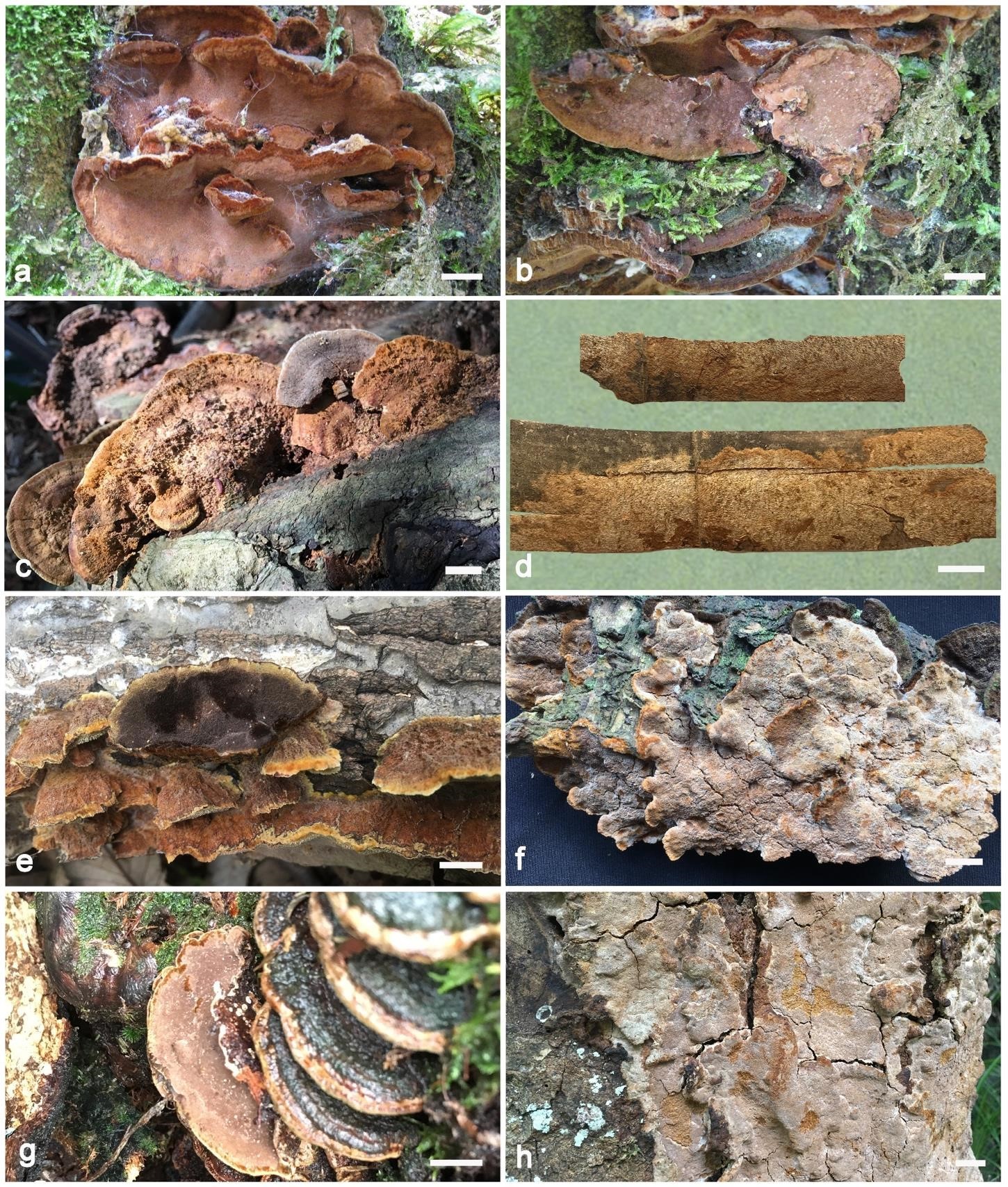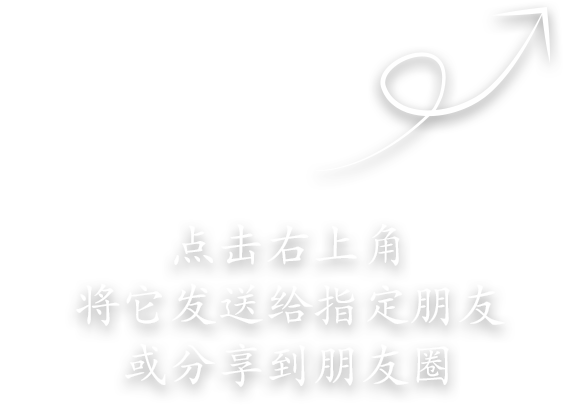 270
270
Fuscoporia karsteniana Q. Chen, F. Wu & Y.C. Dai 2020
MycoBank MB 833962; Facesoffungi number: FoF 08000.
Holotype: China, Jilin Province, Antu County, Changbaishan Nature Reserve, on Populus, 9 Oct 2009, Y.C. Dai 11403 (BJFC 007308).
Morphological description
Basidiocarps – Perennial, resupinate, inseparable, without odor or taste and soft corky when fresh, corky and light-weight when dry, up to 16 cm long, 5 cm wide and 7 mm thick at centre. Pore surface rusty brown, more or less fawn, occasionally cracked when dry, sterile margin narrow or almost lacking, up to 1 mm wide, honey-yellow, distinctly paler than pore surface, usually with mycelial setae; pores more or less circular, 5–7 per mm; dissepiments thin, entire, abundant hymenial setae seen in tube cavities (under anatomical lens). Subiculum cinnamon to reddish brown, corky, very thin, less 0.3 mm thick. Tubes grayish brown, paler contrasting with subiculum, hard corky, up to 6.7 mm long.
Hyphal structure – Hyphal system dimitic; generative hyphae simple septate; tissue darkening but otherwise unchanged in KOH.
Subiculum – Generative hyphae rare, hyaline, thin-walled, occasionally branched, frequently simple septate, 2–2.5 μm in diam.; skeletal hyphae dominant, rust-brown, thick-walled with a narrow to medium lumen, unbranched, aseptate, more or less straight, interwoven, 2.5–3 μm in diam.; mycelial setae frequent, dark reddish brown, thick-walled, tapering to apex, occasionally septate, present in the subiculum, sometimes locally abundant, often in bundles, up to 265 μm long and 5–9 μm in the widest part.
Tubes – Generative hyphae rare, mostly present at dissepiment edges and subhymenium, hyaline, thin-walled, frequently branched and simple septate, 1.5–2.2 μm in diam., some of them encrusted at dissepiment edges and in hymenium; skeletal hyphae dominant, yellowish brown, thick-walled with a narrow to medium lumen, unbranched, aseptate, more or less straight, subparallel along the tubes, 2.3–2.8 μm in diam. Hymenial setae frequent, narrowly subulate, mostly originating from tramal hyphae, dark brown, thick-walled, 34–45 × 5–7.5 μm; basidia barrel-shaped, with four sterigmata and a simple septum at the base, occasionally bearing a small guttule, 14–16 × 4–6 μm; basidioles dominating in hymenium, in shape similar to basidia, but slightly smaller.
Spores – Basidiospores ellipsoid, hyaline, thin-walled, smooth, usually glued in tetrads, bearing a small guttule, IKI–, CB–, 4.5–5.6(–5.8) × (2.8–)3–3.8(–3.9) μm, L = 5.05 μm, W = 3.37 μm, Q = 1.50–1.65 (n = 60/2).
Habitat: on Populus.
Distribution: China.
GenBank Accession: ITS: MN816717* ; nLSU: MN810003*; RPB2: MN848795*; TEF1: MN848807*
Notes: Fuscoporia karsteniana is widely distributed in China and characterized by perennial basidiocarps, septate mycelial setae, absence of cystidioles, and ellipsoid basidiospores measuring 4.5–5.6 × 3–3.8 μm. The new species is closely related to F. ferruginosa sensu stricto in our phylogenies (Figs 1–2), but F. ferruginosa sensu stricto has mostly annual and nodulose basidiocarps, very thick dissepiments (> pore diam.), presence of cystidioles, aseptate mycelial setae; while F. karsteniana has perennial, resupinate and even basidiocarps, thin dissepiments (< pore diam.), absence of cystidioles, some septate mycelial setae. Fuscoporia chinensis is another common species in China, it differs from F. karsteniana by effused-reflexed to pileate basidiocarps and absence of mycelial setae.
Reference: Chen Q, Du P, Vlasák J et al. 2020 – Global diversity and phylogeny of
Fuscoporia (Hymenochaetales, Basidiomycota). Mycosphere 11(1), 1477–1513, Doi 10.5943/mycosphere/11/1/10 
Basidiocarps of Fuscoporia species. a–b Fuscoporia australasica (paratype, Dai 15625). c Fuscoporia australiana (holotype, Dai 18879). d Fuscoporia bambusae (holotype, Dai 16599). e–f Fuscoporia chinensis (e paratype, Dai 17282, f paratype, Dai 17583). g Fuscoporia eucalypti (paratype, Dai 18642A). h Fuscoporia karsteniana (paratype, Dai 17925). Scale Bars = 10 mm.

